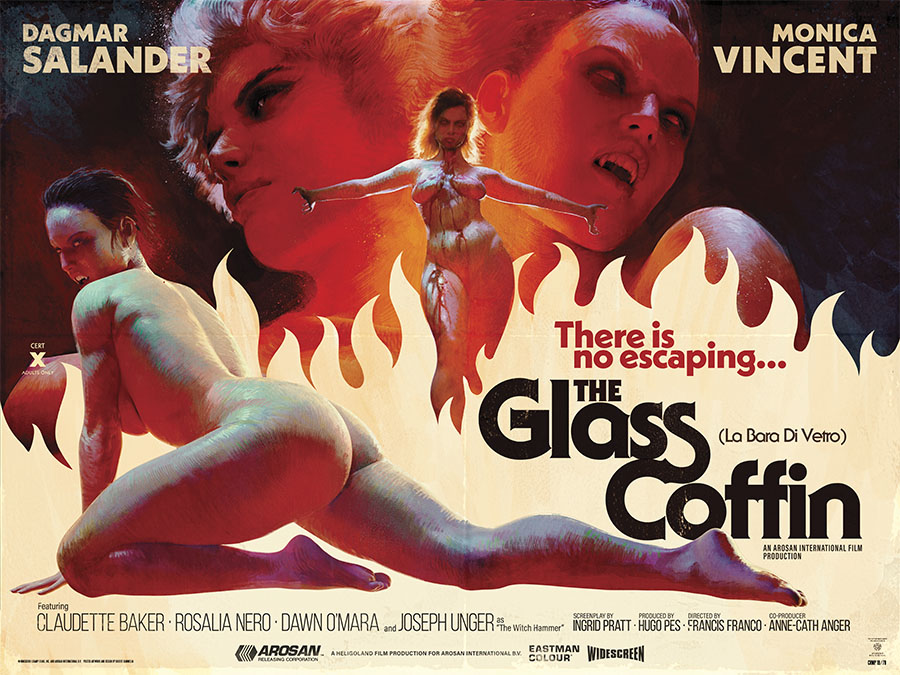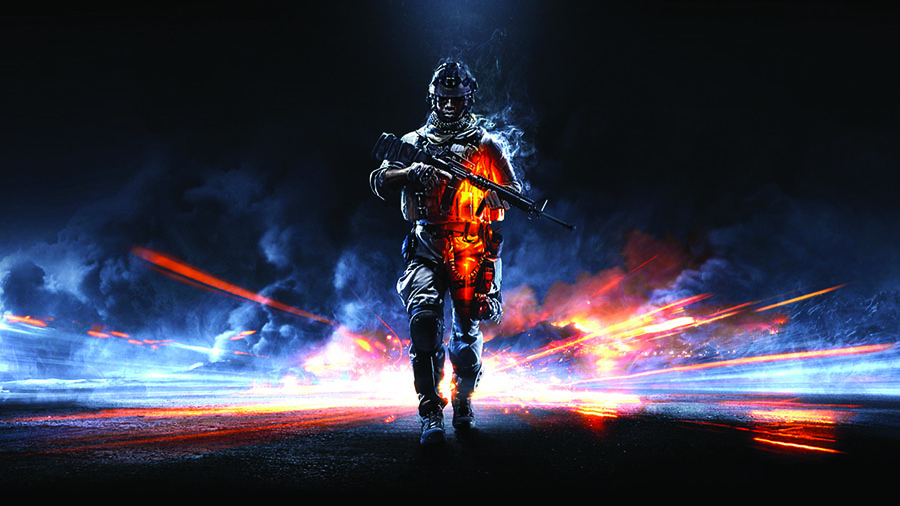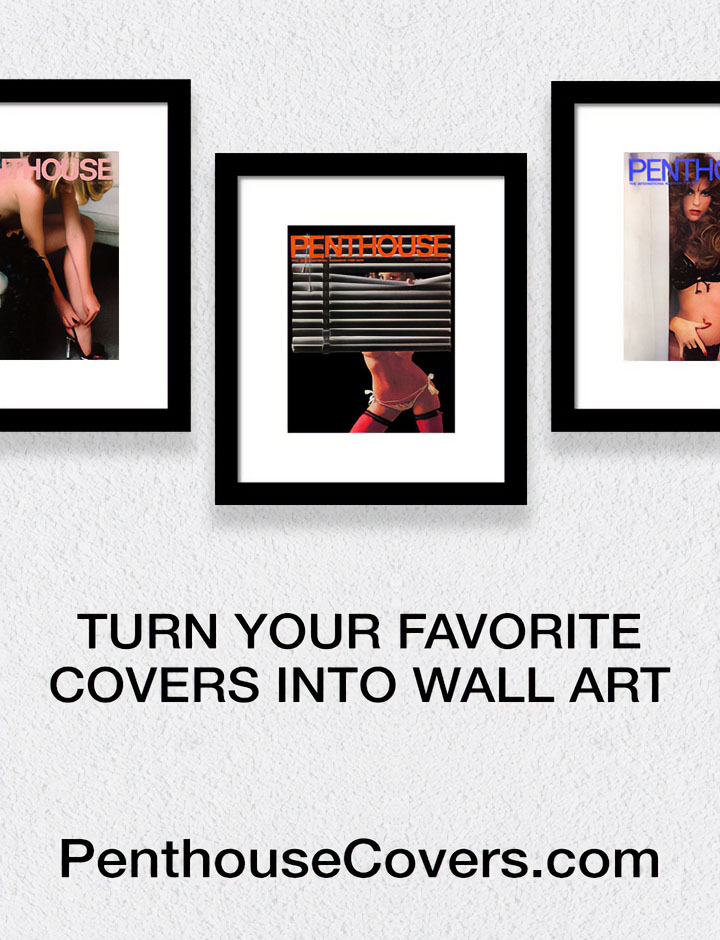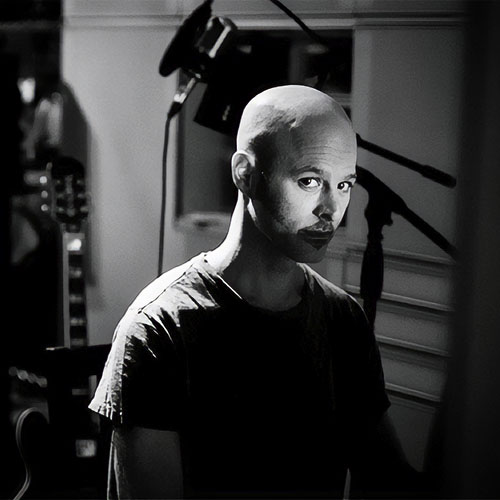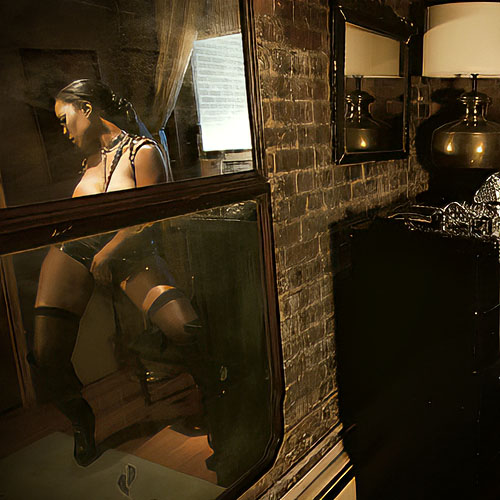We talk to Swedish self-taught artists Robert Sammelin about how he turned a passion into a career that has seen his art in the hands of millions of people around the world.
drAwn to success: THE Robert sAmmelin Way
Robert Sammelin illustrations are an ode to exploitation horror posters, weapons, video games and shapely women who look like they could survive an apocalypse. The self-taught concept artist, illustrator, graphic designer and comic creator from Sweden has worked for Apple, Nike, The New York Times, Rob Zombie, Esquire, Entertainment Weekly and Dark Horse Comics, and designed the branding art for the popular Battlefield video games.
Where did you grow up?
I grew up in Kiruna, a mining town in the absolute north of Sweden, well above the Arctic Circle, where it’s near perpetually dark for the eight months of winter and conversely there’s around-the-clock sunlight during summer. I moved to Stockholm at 20, where I’ve remained for 22 years with my wife and son.
What’s your artistic background?
For as long as I can remember, I’ve enjoyed drawing and making up stories. I’m self-taught, so what I’ve missed out in formal training I’ve gained a shorthand, or rather feeling, for how to depict things and convey what’s in my head.
I still don’t know much about anatomy, color theory or drawing structure, and I rather enjoy that. I let curiosity guide me and make up my own way of doing things.
Before I made art a career at 27, making video game concept art, I must’ve had ten or 12 different jobs; ranging from IT consultant and records store clerk to subway train driver. In the end, only drawing the odd freelance gig on evenings and weekends had me feeling down, and my wife insisted I quit my job and give illustration a proper go.
I spent two weeks drawing a wide range of things for a portfolio and landed my first video game work within a month, and I’ve remained in the industry since, currently at Embark Studios as a Concept Art Director.
How did you develop your signature style?
I had surgery done to my drawing hand wrist due to a ganglion [cyst] which permanently limited its flexibility, just as I had started my first job doing concept art. Working digitally, as you do in concept art, wasn’t an issue thankfully, but I found that my favorite pastime of drawing in ink with pen on paper was limiting and cumbersome, so I started using a brush instead.
Brushes have flexibility and allow for flowing varied lines that I could easily do without much wristwork and made me adopt a line economy, eliminating a lot of fine detail work. I found that flat and subtly textured coloring I’d see in the Euro comics I grew up with complemented that well.
What inspires your art?
Music and films are major factors for me; I constantly play records when drawing and watch at least a couple of films per week. I have a particular soft spot for old campy exploitation horror and like to make movie posters of films that just exist in my head.
I’ve made a habit over the years to build a mental library of imagery and phrases I find cool, fun, odd or interesting and revisit them when free drawing. I never run out of ideas that way—the randomness of a single phrase in a song or an image onscreen can instantly bring up interesting connections to that library.
What drives Robert Sammelin to create art?
I’m at my most content and happy inking a loose pencil drawing, letting myself get surprised at the outcome. Keeping the door open to those surprises means you have to combine safe things with risks.
At my best, a single drawing or image is both crude and delicate, cheeky and scary, fun and thoughtful—that’s what I keep wanting to achieve. Also, I simply can’t seem to stop drawing.
Tell us about your process. What’s involved?
It depends a lot on the assignment; in my normal job making concept art and branding work for games, it’s an entirely digital process that involves a lot of people and factors, so in a way that’s not my art—it’s a team effort.
Commissioned illustrations and posters, on the other hand, I generally start off with some research and reference gathering followed by a couple of rough digital color sketches I run by the client. When we’re in agreement, I do a loose pencil foundation on paper that I either ink or render in pencil, followed by scanning and digital coloring.
There have been the odd acrylic painting or digitally painted pieces over time, but most of my art is done on paper. For my personal work, it’s always on paper with digital coloring and is an improvised affair; I start drawing and make it up as I go.
How has your art evolved over time?
I like to experiment and try different mediums and methods. I think it’s essential for any artist, but for me it diverges into different styles of work—line art inks, pencil renderings, digital painting and branding/key art—that all inform the others but remain its own thing.
Earlier this year, though, I started dabbling with 3D sculpting and rendering. You’d think from making video games the past 15 years I’d been at it for some time, but I just never got around to it. It’s incredibly fun and addictive, but a lot more time-consuming for me than drawing.
What equipment do you use to create your pieces?
Pencils, brushes, dip pen nibs, ink, an assortment of brush pens, whiteout, a computer and a Wacom Cintiq.
How’s your relationship with Instagram?
I was an early adopter of Instagram, but for the longest time favored Tumblr over it for online art posting. With the latter’s steady, sad decline after the adult ban, I jumped ship to Instagram. I have my own site and a few portfolio services like Behance and ArtStation, but for the general outreach, you can’t beat social media. I’ve made a lot of meaningful connections and friendships with artists and clients through it.
Do you ever struggle with online censorship?
At times, yes. Being Swedish, I believe myself to have a healthy relationship to nudity, body positivity and sexuality, and I’m often surprised at what constitutes “safe” content online. The apparent fear of human nudity and sexual expression baffles me.
While I’ve had the expected online content either flagged or removed, I’ve been positively surprised at the vast majority of wonderful praise, support and encouragement from people and women in particular.
What are some of your career highlights?
I’ve ticked off a few bucket list items lately; I was approached to do a gatefold double LP for Ennio Morricone, called Morricone Groove, that focuses on his lesser known soundtrack work from the ’60s and ’70s, which features a lot of my all-time favorite tracks of his.
Getting to work with Rob Zombie on a lot of LP soundtracks for his films was another. I was a big fan in my teens, so getting contacted by him saying he’s a fan of mine was delightful.
The same thing happened again when Anthony Gonzalez of M83 got in touch to have me design a poster and line of merch for a film he’d made to his latest album.
Some of my alternative movie poster screenprints have gotten some wonderful and unexpected praise. James Mangold bought a copy of the Logan poster, and the IMAX office has it hanging in their lobby. I’m also told a copy of my Once Upon a Time … in Hollywood screenprint hangs in the cinema owned by Quentin Tarantino, which if true feels unreal.
My craziest realization, though, is that some 50 million people own art I’ve made in the form of the Battlefield games. I didn’t really dawn on me until I stood beneath a giant billboard in Times Square of my key art for Battlefield 3 and saw ads for it everywhere I went. Designing that signature Battlefield branding art is a definitive career highlight.
Tell us something about you that we might not expect.
I’m a fairly uninteresting character as a whole; I can’t whistle, I never use sketchbooks and have an unusually high physical pain threshold.
What are you working on right now?
Besides making the future of video games at Embark Studios, I’m currently doing a whole bunch of record covers and posters, a comic called YT Savior with Ales Kot for Upshot Studios that is out soon and yet another comic called Kali with Daniel Freedman.
You will discover it fairly easy to find Robert Sammelin online, although you may actually find yourself in ac couple of lesser-know, but substantially more representative of fine art, locations on the web.
- Personal Site: robertsammelin.com
- Instagram: @robertsammelin
- Artstation: robertsammelin
- Behance: RobertSammelin
Of course you can also just buy a copy of a Battlefield game. We have found a nice frosty beverage helps with those, should you be looking for a hint.









